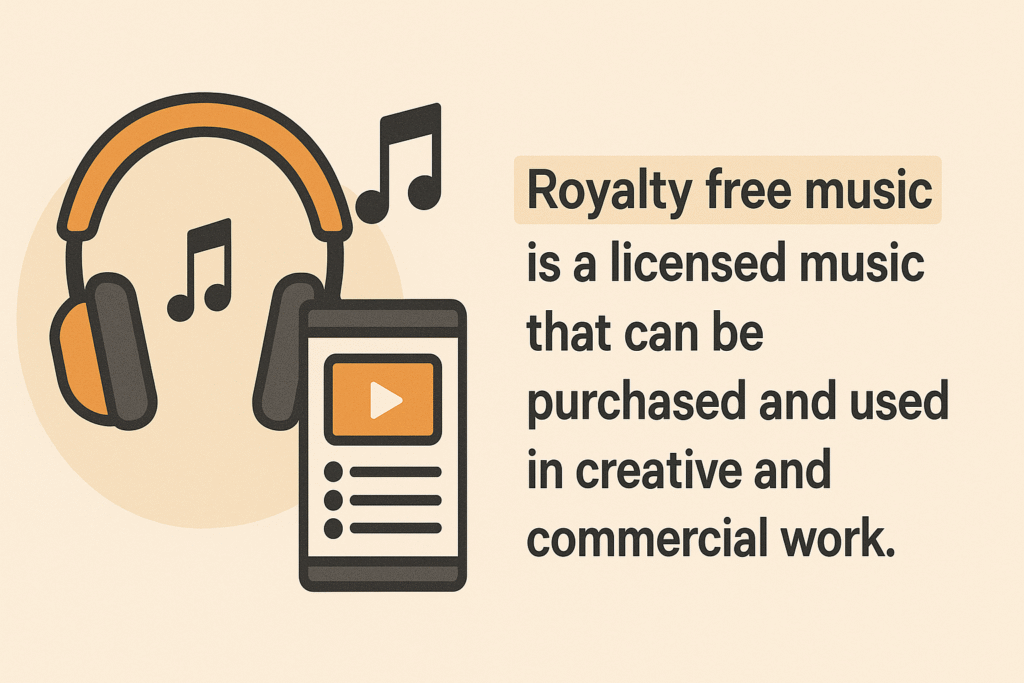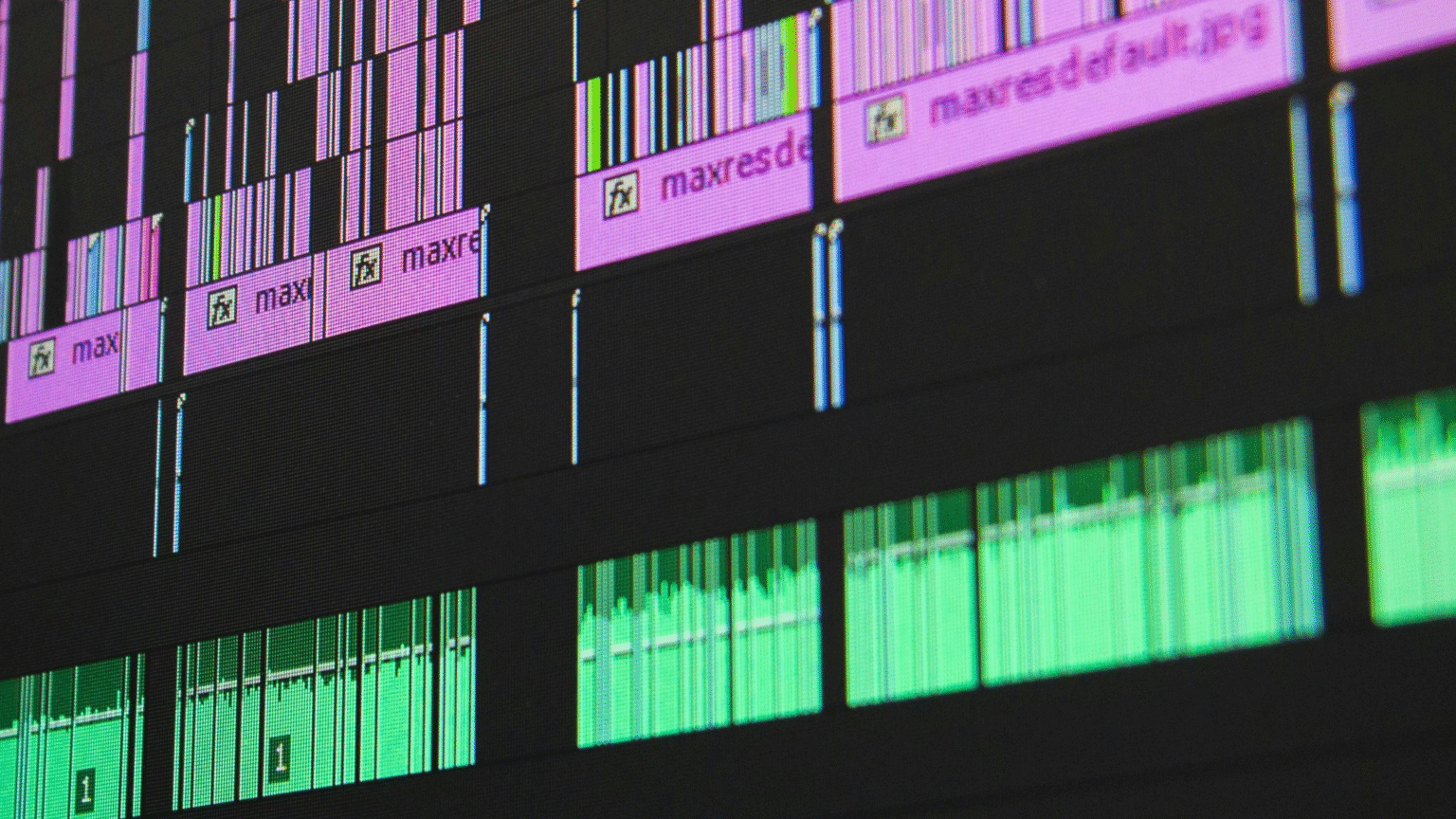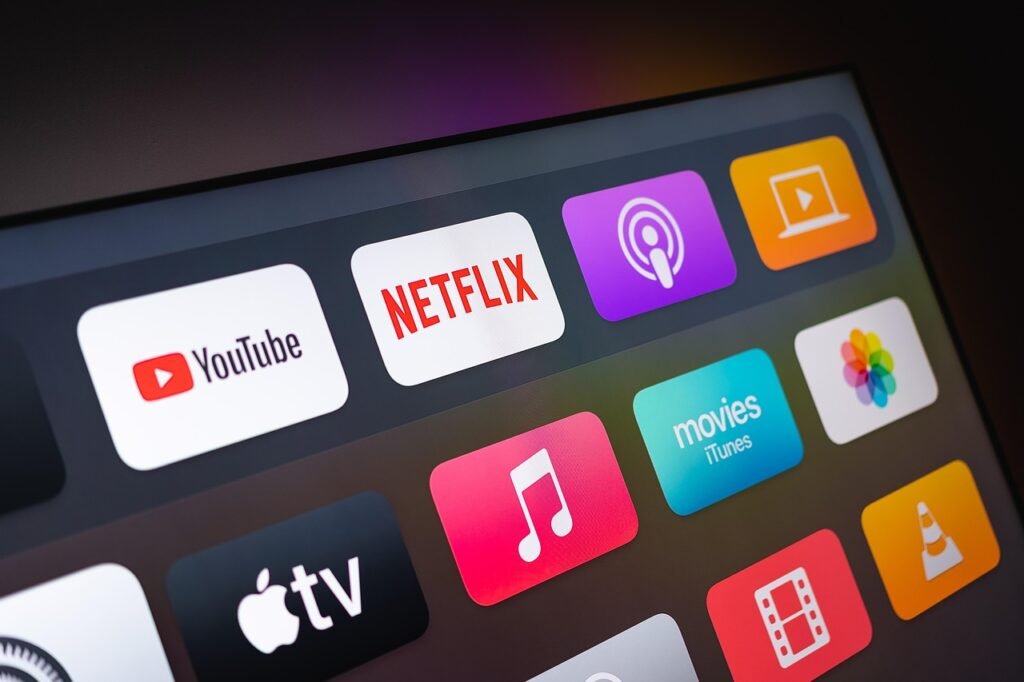When hunting for the perfect music tracks as a video game developer or content creator, you’ve probably come across terms like Royalty-free Music, Creative Commons Music, Copyright-free Music, and DMCA-free Music. But what do all these mean, and can you safely use them in your projects?
After putting so much effort into your work, the last thing you want is to face copyright strikes.To keep your projects safe and sound, it’s super important to make sure you have the right license when using royalty free music.
In this article, we clarify the definitions and differences between these often-confused terms.
- Royalty free music
- Creative Commons Music
- Copyright-free music
- DMCA-free music
- Music Library (Free & Paid)
1. Royalty Free Music
Royalty Free music is a type of music license where you pay once to use the music in your project, like a TV commercial, YouTube video, or video game. Usually, the cost depends on factors such as the number of views, downloads, platform, or how long you use the music. Different music sites have their own license options. Some licenses allow single use, while others permit multiple or unlimited uses; licensing options may be per-track or subscription-based.

While “free” might be part of the term “royalty free,” it doesn’t always mean the music is free of charge. In most cases, the owner of the music either gets the payment or waives it. What royalty-free music licensing does is eliminate ongoing royalty payments, freeing you from having to pay Performing Rights Organizations (PROs) fees each time your project uses the music.
In essence, royalty-free music offers a legal way to incorporate music that you don’t own into your projects. Both free and paid licenses are available, with free licenses typically having some usage restrictions and extra requirement like attribution.
2. Creative Commons Music
The non-profit organization Creative Commons (CC) enables creators—from individuals to large institutions—to grant standardized copyright permissions to the public and let others use their works under clearly defined terms within copyright law.
6 types of Creative Commons License
There are six creative commons licenses types, listed from most to least permissive here:
| Types | Meaning | Sign |
|---|---|---|
| CC BY | BY: credit must be given to the creator. The license allows for commercial use. |  |
| CC BY-SA | BY: credit must be given to the creator. SA: Adaptations must be shared under the same terms. The license allows for commercial use. |  |
| CC BY-NC | BY: credit must be given to the creator. NC: Only noncommercial uses of the work are permitted. |  |
| CC BY-NC-SA | BY: credit must be given to the creator. NC: Only noncommercial uses of the work are permitted. SA: Adaptations must be shared under the same terms. |  |
| CC BY-ND | BY: credit must be given to the creator. ND: No derivatives or adaptations of the work are permitted. The license allows for commercial use. |  |
| CC BY-NC-ND | BY: credit must be given to the creator. NC: Only noncommercial uses of the work are permitted. ND: No derivatives or adaptations of the work are permitted. |  |
Creative Commons Music Risks and How to Stay Safe
Creative Commons offers free music for projects, but it’s less reliable than royalty-free options. Licenses can change, and creators risk copyright strikes on YouTube or commercial works. The music library is also more limited. To stay safe, always screenshot the license, record the date, and save the URL when downloading.
Creative Commons licenses can sometimes be vague
For example, how do you define commercial versus non-commercial use? Does a monetized YouTube video count as commercial? What if a company uses Creative Commons music in a behind-the-scenes video that doesn’t directly promote a product? These gray areas can lead to conflicting interpretations, so it’s important to proceed with caution and understand the specific terms of each license.
3. Copyright-free Music
Copyright-free (or no-copyright) music refers to works for which the creator has dedicated all rights to the public domain (or CCO), waiving any copyright claims worldwide to the fullest extent permitted by law. This means anyone can freely copy, modify, distribute, and perform the work—even for commercial purposes—without needing to ask for permission.
There are two cases: one is when the owner of the music voluntarily gives up the copyright, and the other is that, as of January 1, 2025, musical compositions from 1922 and earlier will automatically enter the public domain.
Every sound recording carries two rights: the composer’s copyright and the recording artist’s or producer’s rights. For example, if someone records a public domain piece like Beethoven, their version becomes a derivative work. They own the copyright to that recording and can charge a license fee for its use.
Many creators misuse this concept. Music labeled “Copyright Free” or “No Copyright Music” on YouTube is rarely free of copyright. Most tracks still require attribution, restrict usage to certain platforms, or prohibit monetization.
4. DCMA-free Music
The United States enacted the Digital Millennium Copyright Act (DMCA) in 1998 to prohibit unauthorized use of copyrighted works, including music, artwork, videos, images, written content, and software.
DMCA-free music works like royalty-free, Creative Commons, and copyright-free music—you can use these tracks in your projects or on streaming platforms without risking copyright infringement or takedowns.
Example of DMCA-free music:
- Music that is in the public domain or released under CC0 licenses
- Music licensed under the appropriate Creative Commons licenses
- Royalty-free music that covers specific uses such as streaming, YouTube, video games, and more
However, it’s important to note that DMCA-free music is not always free of charge. While some streaming platforms offer free playlists, it’s crucial to verify the licensing before use to avoid potential copyright issues that could disrupt your channel.
Since DMCA compliance is critical, let’s look at two major platforms that enforce DMCA rules strictly:
No. 1 — YouTube
Anyone can file a copyright claim on YouTube, which may lead to video removal. The channel owner either accepts the takedown or submits a counter-notice, and YouTube adds a copyright strike to their account.
Learn more about YouTube DMCA procedures.
No. 2 — Twitch
When Twitch receives a valid copyright infringement notice from a rights holder, they notify the channel owner and typically remove or restrict access to the infringing content. This can also result in disabling live streams or suspending accounts. For more details, see DMCA on Twitch.
5. Music Library (Free & Paid) for Youtube Videos
Although the terms “royalty-free,” “copyright-free,” and “DMCA-free” all include the word ‘free,’ only copyright-free music (also known as Public Domain music) is truly free to use without needing permission or payment.
This confusion can increase the chances of running into copyright problems. Because of this, it’s safer to use trusted music licensing sites when looking for background music for your content.
Top-quality free music websites for your projects:
Free music archive: a trusted site, started by a community radio station called WFMU in New Jersey over ten years ago. It has both copyright music and copyright-free music, so it’s important to check the license before using any song.
PD Info: a dedicated public domain information project that provides carefully researched lists of public domain music titles. Note that downloading music from its website requires a one-time payment.
YouTube Audio Library: most tracks do not need attribution. Available for Monetization on YouTube only. Music are in Mp3 format and includes tracks featuring drums, claps, bass, piano, and chill styles.
HaiMusic: a reliable platform offering studio-quality background music across a diverse range of genres and moods, including chill upbeat, romantic lofi, cinematic epic, comical, and groovy hip hop. All music tracks are 100% royalty-free, copyright-safe, and DMCA-free, fully cleared for use on YouTube, Twitch, and TikTok!
SoundCloud: one of the streaming platforms for discovering new music, supported by a vast community of musicians. To use any music from SoundCloud in your YouTube videos, commercials, or other projects, you must contact the creator directly to negotiate licensing agreements and royalty terms.


